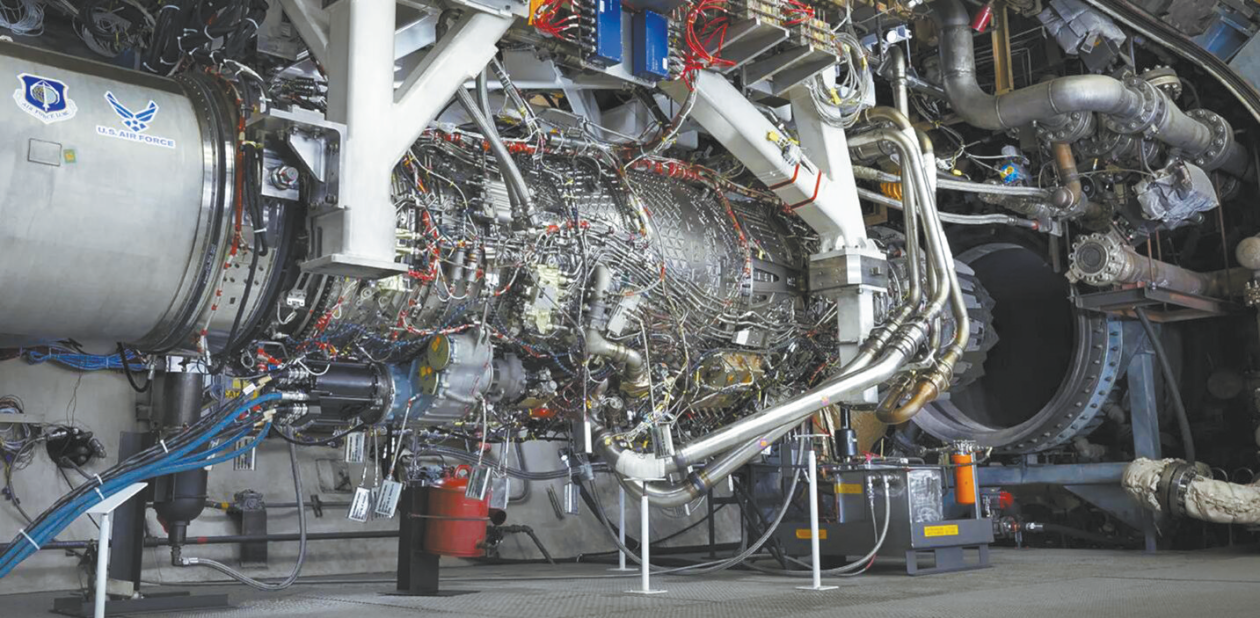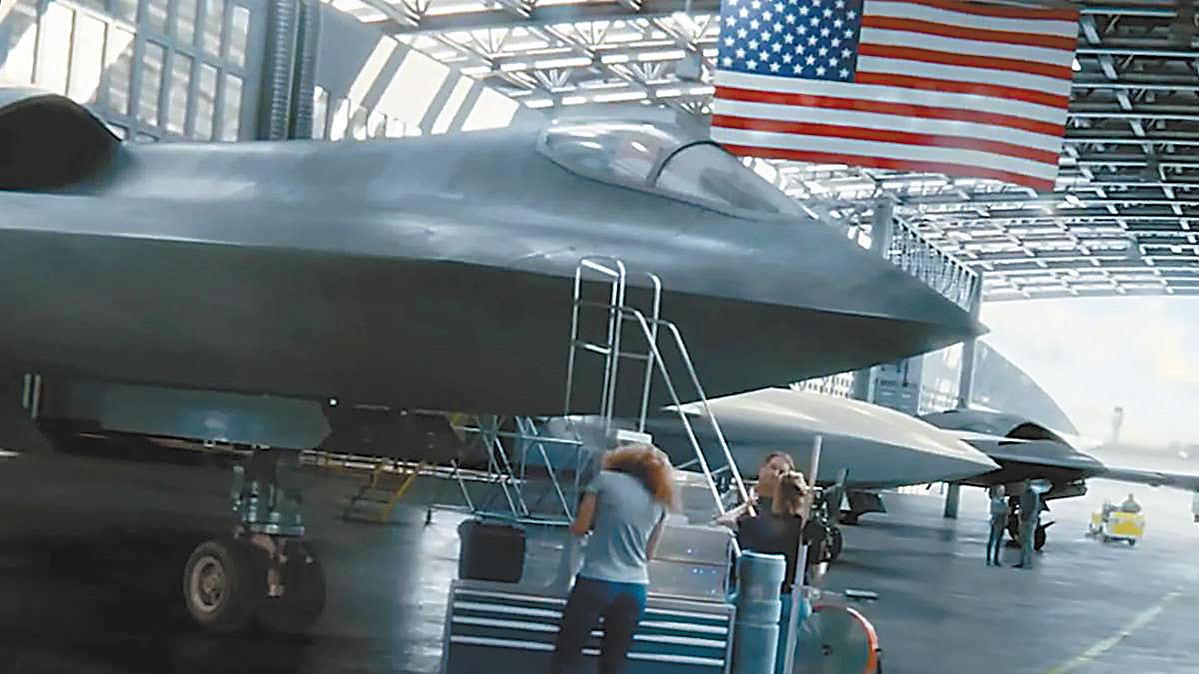The U.S. Navigation Project revealed that the six generations of aircraft developed new changes. The "OEMs" also developed engines?
Author:Global Times Time:2022.08.24
[Global Times Special Reporter Chapter] The U.S. Air Force recently awarded a contract to five companies to promote the promotion of the "next generation of adaptive promotion plan" (NGAP). The engine developed by the plan will provide motivation for at least the sixth -generation manned stealth fighter. However, only two of the five companies are traditional engine manufacturers, and the other three are famous for R & D aircraft and do not produce fighter engines. Is the U.S. Air Force who is sick and disorderly in order to promote the development of the engine?
Develop a new engine for the sixth generation machine
According to the U.S. "Power" website "Theater" channel reported on the 22nd, the Air Force Life Cycle Management Center, which is located in the Air Force Life Cycle Management Center, Ohio's Wright Patsen Air Force Base in Ohio, awarded the "Next Generation Adaptive Promotion Plan" contract on August 19, Each contract is worth $ 975 million. This is part of the larger "next -generation air advantage" (NGAD) program. The five companies are Boeing, Lockheed Martin, Nosrort Gruman, General Electric and Pratt & Whitney. These 5 contracts are similar to the development of prototypes for the "next generation of adaptive promotion plan". The focus is on providing a promotion system for future air advantage platforms and digitizing the industrial foundation of the power system. This contract makes technology mature and reduces the risk of development through design, analysis, tablet trials, prototype engine testing and weapon system integration. It is expected to be completed before July 11, 2032.

GMA100 engine was tested in 2020.
It is reported that in the report of the US Department of Defense, it was not mentioned that it was necessary to be tested in the next -generation air advantage aircraft or on the actual aircraft. However, among the above -mentioned companies, only General Electric and Pratt & Whitney are fighter engine manufacturers, and they are also the two major suppliers of the US military fighter engine. The article believes that the contract is awarded Boeing, Lockchid Martin and Nosrort Gouman. The U.S. Air Force seems to be exploring the research and development model of the potential income of these companies with General Electric and inclusive companies.
NGAP is part of NGAD. NGAD consists of a series of different projects, which aims to develop various next -generation tactical air combat capabilities, including new weapons, sensors, networks and combat management capabilities, and driving and driverless aircraft. The sixth -generation manned fighter in the plan will be different from the previous fighters. Judging from the current signs, the design will give priority to stealth, voyage, and effective loads, not extreme mobility. The specific details of the NGAP engine may use their planes in the future are still very limited, and the entire NGAD program is also highly confidential.
The "OEM" also develops an engine?
In response to the US Air Force awarded engine contracts to other military industry groups outside the traditional engine manufacturer, the "Theater" article believes that the US Air Force is interested in expanding the scope of its potential engine suppliers, and seeking to promote competition between companies to avoid excessive monopoly monopoly. Essence The article believes that when NgAP and these engines are adapted, the results of winners are extremely impossible. Some R & D work made by the "failure" company in these two projects is likely to still be included in the final design as part of the team's efforts. This helps to accelerate the project and procurement process and disperse costs and risk burdens. General Electric and Pratt & Whitney will be in a favorable position to provide key production capacity, even if their design has not won in the end.

CG diagram of the next -generation fighter in the promotional film of the Noscop Gruman.
The article on the US "Air Force Magazine" website believes that because the transformer engine needs to be integrated with the height of the fuselage in order to switch between different modes and incorporate the whole machine design manufacturer into this plan, it can help guide the engine prototype design of the engine prototype design. To ensure seamless integration of future engines and fighters. It is reported that Mark J. Lewis, the executive director of the Emerging Technology Research Institute of the National Defense Industry Association and former chief scientist of the US Air Force, said in an interview that any promotion system must design a specific platform that runs. This is especially true for these adaptive engine systems. "So you need to work with the fuselage (manufacturer) to develop an engine. It is even more difficult to make adaptive engines a system that is, plug -in and played, but not impossible." Lewis said that some technical progress brought by adaptive engines brought by the adaptive engine A fighter may require a specific design to make full use of it. In particular, adaptive engines can be converted between models for thrust and voyage optimization. "If you design a plane today, you will start deciding what is the most important. In terms of performance, do you have the maximum acceleration? Do it must be able to fly to the maximum range? But these two requirements may be contradictory." Lewis said, "With adaptive engines, it may be beautiful. Therefore, the design of the fuselage may reflect this." Lewis believes that other considerations include the "third airflow" (that is, the adaptive airflow generated by the third culvert) in the adaptive engine design. The third airflow changed the geometric shape of the engine.
F-35 plan to change the engine?
In addition to developing a new engine for the sixth-generation fighter, the US Air Force is still struggling with how to replace the engine for the F-35 fighter. According to the "theater", the US Air Force has disclosed in the past that there is a direct connection between the "Adaptive Engine Transition Plan" (AETP) and NGAP. GM developed advanced engines under AETP, known as XA100 and XA101 under AETP. Although the design details are different, both engines can automatically switch between different modes according to the situation, and different modes focus on improving fuel efficiency or other aspects. The focus of the US Air Force AETP is to develop new engines for the follow-up improvement version of the F-35. At present, General Electric is advocating the use of its XA100 or its improved, derivative product equipment F-35.
The company said that the XA100 will increase the range of F-35A and F-35C by 30%, increase acceleration capabilities by 20%to 40%, and increase fuel economy by about 25%. All these performance improvements depend on specific loading, task overview and other factors.
Pratt & Whitney is currently proposed to upgrade the existing and produced F-35 fighter aircraft, rather than promoting its XA101 project. The US Air Force Minister KFC has publicly stated that he supports replacement with a new engine, but he emphasized that it was his personal opinion. The F-35 Joint Planning Office is still studying these options, and the cost and compatibility issues may be the main factor. Another problem is that at least the existing AETP engine design is not suitable for short-range take-off and vertical landing F-35B. F-35B has more stringent design restrictions in the internal configuration, including large vertical lift fans and hinge engine exhaust nozzles. If it is replaced with a new engine, it also needs to be integrated with it.
At the same time, the US Air Force has been warning that if AETP is abandoned, it will have a potential negative impact on the foundation of the American jet engine industry.
According to the "Air Force Magazine" website, the "adaptive engine transition plan" was initially operated by the US Air Force Research Lab and is now operated by the US Air Force Life Cycle Management Center. Previously, both inclusive and General Electric stated that their engine battery life increased by 25%to 30%, accelerated capacity increased by 18%, and improved the cooling capacity of airborne electronic equipment. Potential other benefits include providing more electricity for radar systems and targeted weapons and reducing heat characteristics to improve stealth.
- END -
Boeing "disappointment"?This is not China

After the three major airlines in China announced on July 1, after the order of 29...
"August 1" gift
On the occasion of the August 1 Army Festival, I would like to extend a lofty military ceremony to all the active (cultural vocational) and reserve officers and soldiers of the Republic! He is a sol